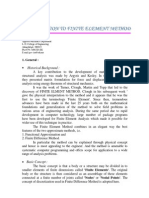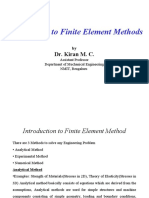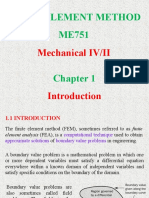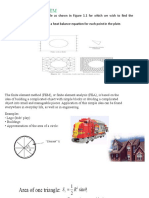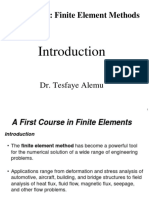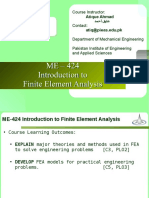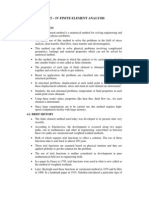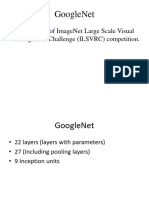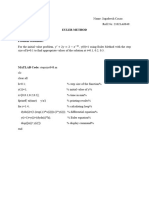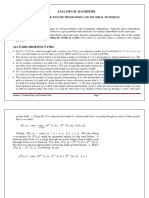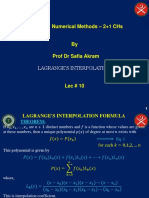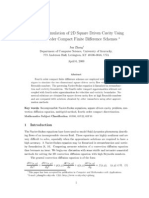0% found this document useful (0 votes)
70 views29 pagesFEM Introduction
The finite element method (FEM) is a numerical technique used to approximate solutions to complex problems by dividing them into simpler subdomains called elements. It involves a systematic process of discretization, selecting interpolation models, deriving stiffness matrices, and assembling equations to solve for unknown nodal displacements. FEM has a wide range of applications across various engineering fields, including structural, thermal, and dynamic analysis, and has evolved significantly since its inception in the early 20th century.
Uploaded by
MAVIC MINI AERIAL ADVENTURERCopyright
© © All Rights Reserved
We take content rights seriously. If you suspect this is your content, claim it here.
Available Formats
Download as PDF, TXT or read online on Scribd
0% found this document useful (0 votes)
70 views29 pagesFEM Introduction
The finite element method (FEM) is a numerical technique used to approximate solutions to complex problems by dividing them into simpler subdomains called elements. It involves a systematic process of discretization, selecting interpolation models, deriving stiffness matrices, and assembling equations to solve for unknown nodal displacements. FEM has a wide range of applications across various engineering fields, including structural, thermal, and dynamic analysis, and has evolved significantly since its inception in the early 20th century.
Uploaded by
MAVIC MINI AERIAL ADVENTURERCopyright
© © All Rights Reserved
We take content rights seriously. If you suspect this is your content, claim it here.
Available Formats
Download as PDF, TXT or read online on Scribd
/ 29






